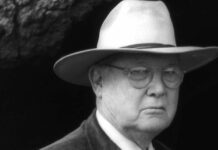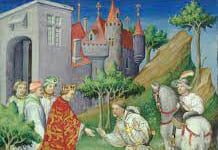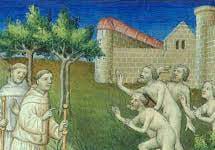If you are looking for a comprehensive biography of Alexander Graham Bell then you are in the right spot. Here, read the article and quench your curiosity about the great scientist.
Alexander Graham Bell-Brief Life Sketch
Alexander Graham Bell was a physicist and educator. He was born on March 3, 1847, in Edinburgh, Scotland. His father’s name was Alexander Melville Bell. Educated at the University of Edinburgh and the University College of London, he began his career as an assistant teacher in a deaf-mute educational institution. Graham Bell moved to the United States in 1871 and became a professor of vocal physiology at Boston University. There he launched various initiatives for the development of education for deaf people of the day and contributed to the development of special methods for the education of deaf people. It was during this time that he came up with the idea of transmitting sound with the help of electric waves, and after a long period of research, he discovered the telephone on June 5, 1875 AD. Alexander Graham Bell also had a reputation as a phonologist. Alexander Graham Bell also tried to create an international language called ‘World English’.
Alexander Graham Bell, the great scientist, died on August 2, 1922. 0 0 0
Alexander Graham Bell-Comprehensive Biography
Introduction
Alexander Graham Bell, best known as the inventor of the telephone, was a pioneering scientist, educator, and humanitarian. Born on March 3, 1847, in Edinburgh, Scotland, Bell’s contributions to communication technology, education for the deaf, and his humanitarian efforts left an indelible mark on the world. His life was a testament to the power of curiosity and innovation, and his legacy extends far beyond his most famous invention.
Early Life and Education
Alexander Graham Bell was born into a family deeply involved in the study of speech and elocution. His father, Alexander Melville Bell, was a renowned phonetician and developed “Visible Speech,” a system of symbols representing the sounds of speech. His mother, Eliza Grace Symonds Bell, was an accomplished pianist despite being almost completely deaf. These influences shaped young Bell’s interest in communication and the mechanics of speech.
From a young age, Bell was fascinated by sound and the human voice. His education was varied and unconventional; he was largely homeschooled by his father but also attended the Royal High School in Edinburgh, from which he did not graduate. Despite this, he showed a keen interest in science, particularly in acoustics and electricity. At the age of 12, he created his first invention—a simple dehusking machine for his friend’s grain mill, showcasing his inventive spirit.
The Move to Canada and the United States
In 1870, following the deaths of his brothers, both of whom succumbed to tuberculosis, Bell’s family moved to Brantford, Ontario, Canada, seeking a healthier environment. This move was pivotal in Bell’s life, as it provided him the space and opportunity to focus on his scientific pursuits.
A year later, in 1871, Bell moved to Boston, Massachusetts, to teach at the Boston School for the Deaf. His teaching methods were innovative; he used Visible Speech, his father’s system, to help deaf students learn to speak. His success as an educator led to positions at several prominent schools for the deaf, including the Clarke School for the Deaf in Northampton and the American School for the Deaf in Hartford. This work laid the groundwork for his lifelong commitment to improving communication for the hearing impaired.
The Invention of the Telephone
Bell’s interest in communication technology, particularly the transmission of sound over wires, was sparked by his experiments with telegraphy. He envisioned a device that could transmit the human voice electronically. Working with his assistant, Thomas Watson, Bell began experimenting with “harmonic telegraphy,” a method of sending multiple telegraph messages simultaneously on the same wire. These experiments led to the development of a device capable of transmitting vocal sounds.
On March 10, 1876, Alexander Graham Bell made the first successful telephone call to Watson, famously saying, “Mr. Watson, come here, I want to see you.” This moment marked the birth of the telephone, one of the most transformative inventions in human history. Bell received the patent for the telephone on March 7, 1876, just a few days before his historic demonstration.
The telephone quickly gained popularity, revolutionizing communication by allowing people to speak directly to each other across great distances. In 1877, Bell and his investors founded the Bell Telephone Company, which would eventually grow into the American Telephone and Telegraph Company (AT&T), a major telecommunications giant.
Legal Battles and Recognition
The success of the telephone brought with it numerous legal challenges. Bell’s patents were contested by more than 600 lawsuits, including one from Elisha Gray, who claimed to have invented a similar device. Despite these challenges, Bell’s patents were upheld, solidifying his place as the inventor of the telephone.
Bell received numerous accolades for his invention. In 1880, Alexander Graham Bell was awarded the prestigious Volta Prize by the French government, which he used to establish the Volta Laboratory in Washington, D.C. The laboratory became a hub for research in communication and sound technology, producing innovations such as the photophone, which transmitted sound using light, and the development of early recording devices.
Contributions Beyond the Telephone
Although the telephone was his most famous invention, Bell’s contributions extended far beyond it. He continued to explore various fields, including aeronautics, medicine, and marine engineering.
- The Photophone: Bell considered the photophone, invented in 1880, as his most significant invention. It used light beams to transmit sound and was a precursor to modern fiber optic communication technology.
- The Graphophone: At the Volta Laboratory, Bell and his associates improved Thomas Edison’s phonograph, creating the graphophone, which used wax cylinders for sound recording and playback.
- Aeronautics: Bell was a founding member of the Aerial Experiment Association (AEA) in 1907, which conducted pioneering work in aviation. The AEA developed some of the first powered aircraft in North America, contributing to the early development of flight technology.
- Hydrofoils: Bell was fascinated by watercraft and worked on developing high-speed boats using hydrofoil technology. His boat, the HD-4, set a world speed record for watercraft in 1919.
- Deaf Education and Advocacy: Alexander Graham Bell remained deeply committed to education and advocacy for the deaf throughout his life. He served as president of the American Association to Promote the Teaching of Speech to the Deaf and established schools and programs for the deaf in the United States and Canada.
Personal Life and Family
In 1877, Alexander Graham Bell married Mabel Gardiner Hubbard, one of his deaf students and the daughter of Gardiner Greene Hubbard, a prominent lawyer and one of Bell’s financial backers. Mabel was a profound influence in Bell’s life, supporting his work and helping manage his business affairs. They had four children, two sons who died in infancy, and two daughters, Elsie May and Marian.
The Bells maintained homes in Washington, D.C., and Baddeck, Nova Scotia, where they spent many summers. In Baddeck, Bell built a large estate called Beinn Bhreagh, meaning “Beautiful Mountain” in Gaelic, where he conducted many of his later experiments. The community of Baddeck held a special place in his heart, and it was here that he conducted many of his experiments in aviation and hydrofoils.
Later Years
In his later years, Alexander Graham Bell focused on scientific research and philanthropy. He was a founding member of the National Geographic Society and served as its president from 1896 to 1904, transforming it into a major scientific and educational institution. His contributions helped shape the magazine into a renowned publication for science, exploration, and photography.
Alexander Graham Bell continued his experiments until his final days. On August 2, 1922, he passed away at his beloved home in Baddeck, Nova Scotia, at the age of 75. As a tribute, all telephone services in the United States and Canada were suspended for one minute during his funeral.
Impact and Legacy
Alexander Graham Bell’s impact on the world is immeasurable. His invention of the telephone transformed global communication, shrinking distances and connecting people in ways previously unimaginable. His work in education for the deaf laid the foundation for modern practices and expanded opportunities for those with hearing impairments.
Alexander Graham Bell’s legacy is preserved in numerous institutions and landmarks bearing his name, including the Alexander Graham Bell National Historic Site in Baddeck and the Bell Telephone Memorial in Brantford, Ontario. His pioneering spirit and dedication to improving the lives of others continue to inspire generations of inventors, educators, and scientists.
In reflecting on his life and achievements, Alexander Graham Bell once said, “When one door closes, another opens; but we often look so long and so regretfully upon the closed door that we do not see the one which has been opened for us.” This philosophy guided his relentless pursuit of knowledge and innovation, making him not just an inventor but a visionary whose work changed the course of history. 0 0 0
N.B. The article originally belongs to the book ‘Introduction to World Personalities‘ by Menonim Menonimus.
Books of Composition by M. Menonimus:
- Advertisement Writing
- Amplification Writing
- Note Making
- Paragraph Writing
- Notice Writing
- Passage Comprehension
- The Art of Poster Writing
- The Art of Letter Writing
- Report Writing
- Story Writing
- Substance Writing
- School Essays Part-I
- School Essays Part-II
- School English Grammar Part-I
- School English Grammar Part-II..
Books of S. Story by M. Menonimus:
Books of Biography by M. Menonimus:
- The World Writers-Brief Biographies
- Introduction to World Writers
- Introduction to World Personalities
- Love of Reputed Persons ..
Related Search:
- Lives of Poets
- Writers’ Lives
- Top Hundred Writers
- Best Writers of All Time
- Most Eminent English Poets











